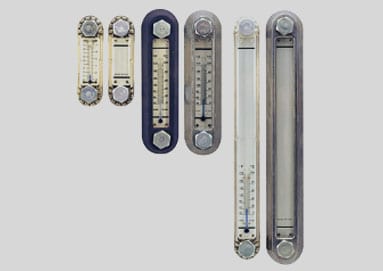 The hydraulic pressure gauge is an essential tool, whether running a factory, operating heavy machinery, or engaging in any other industry requiring precision control and measuring pressure levels over time.
The hydraulic pressure gauge is an essential tool, whether running a factory, operating heavy machinery, or engaging in any other industry requiring precision control and measuring pressure levels over time.
This versatile device makes it possible to easily track and document changes in fluid pressure so you can respond swiftly to changing situations and keep your operations running smoothly.
But what exactly does this remarkable piece of equipment do?
We’ll explore the purpose of the hydraulic pressure gauge and take an in-depth look at how it works. Read on if you’re ready to understand how this tool can effectively monitor and control pressure levels in your environment!
What is a Hydraulic Pressure Gauge?
A hydraulic system’s pressure gauge measures the pressure within the system and displays it for operators to see. Generally, the display is connected to a sensor to measure the system’s fluid intensity pressure. It helps determine if the system is operating safely and within accurate parameters.
With pressure gauges, the fluid power systems become predictable and reliable. Without it, there’s no way to know if the pressure is too high or too low, leaving it open to potential system impairment. Having this dependable device can prevent leaks or if there’s contamination in the system that needs to be addressed.
Main Reasons to Use a Pressure Gauge for Hydraulic Systems
Be aware of what might happen in your hydraulic systems while increasing safety with these measurement devices. Rely on it for predictability while achieving robust system performance. At the same time, avoid future risks and system failures.
Other reasons to use a hydraulic pressure gauge:
- Easy troubleshooting: Gauges tell if there’s a problem elsewhere if pressure isn’t the problem.
- Enhanced visibility: It tells you when it’s safe to carry out investigative activities.
- Spot and avoid leaks or damages: Leaks or blockages can reduce the pressure in the system, which will appear on the gauge.
- Avoid potential hazards: Hazards are prevented when using the correct gauge, such as explosions, injuries, or leaks.
- Peace of mind and reassurance: You have extra reassurance, knowing you have an accurate and reliable monitoring tool to gauge the system’s pressure.
Why Use a Liquid-Filled Pressure Gauge?
Hydraulic pressure gauges contain liquid, such as glycerin, silicon, or mineral oil. These dampen the movement of the gauge’s internal components. It’s commonly found in most on-site commercial and industrial applications due to the benefits it provides, including:
- Higher accuracy: These are less affected by vibration and improve the gauge’s accuracy because the liquid absorbs the pressure fluctuations by dampening movements.
- Less affected by temperature changes: The liquid insulates the system’s components from temperature changes, preventing thermal expansion or contraction.
- Durability: Liquid-filled gauges are more durable than other types because they protect the gauges’ internal components from corrosion and wear. It also prevents dirt, dust, and other contaminants from entering the system, improving its performance and lifespan.
- Reduce pressure spikes: While the pressure rises, the liquid compresses and absorbs the spikes to prevent damage to the internal components.
Other Key Considerations When Choosing a Hydraulic Pressure Gauge
Apart from liquid-filled gauges, learning some essential considerations will help you determine the best pressure gauge for your system. Some things to remember include:
- Pressure range needed
- Pressure and force
- Scale, digital, or dry gauges
- Choice of material
- Mounting options
- Right thread on the mount
- Accessories for superior performance and accessibility
Use a Pressure Gauge for Better Hydraulic Operations
For a safer and more seamless operation in your facility, equip your hydraulic systems with the proper pressure gauge from DOMS Incorporated. Don’t hesitate to contact us today, and we’ll develop a pressure gauge device according to your project’s needs and requirements. Request a quote, and we’ll work on a cost-effective solution together.



